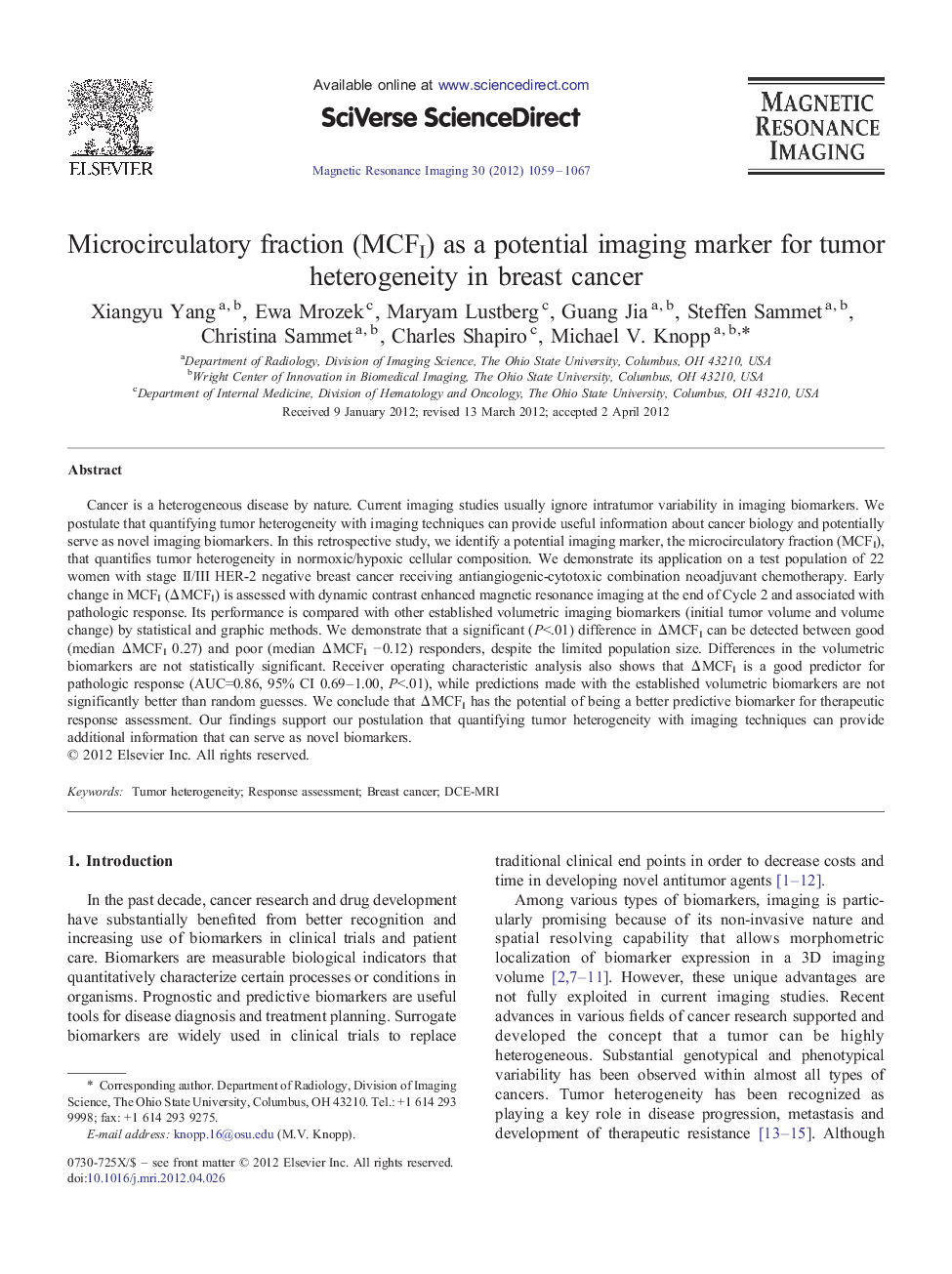| Article ID | Journal | Published Year | Pages | File Type |
|---|---|---|---|---|
| 10712698 | Magnetic Resonance Imaging | 2012 | 9 Pages |
Abstract
Cancer is a heterogeneous disease by nature. Current imaging studies usually ignore intratumor variability in imaging biomarkers. We postulate that quantifying tumor heterogeneity with imaging techniques can provide useful information about cancer biology and potentially serve as novel imaging biomarkers. In this retrospective study, we identify a potential imaging marker, the microcirculatory fraction (MCFI), that quantifies tumor heterogeneity in normoxic/hypoxic cellular composition. We demonstrate its application on a test population of 22 women with stage II/III HER-2 negative breast cancer receiving antiangiogenic-cytotoxic combination neoadjuvant chemotherapy. Early change in MCFI (ÎMCFI) is assessed with dynamic contrast enhanced magnetic resonance imaging at the end of Cycle 2 and associated with pathologic response. Its performance is compared with other established volumetric imaging biomarkers (initial tumor volume and volume change) by statistical and graphic methods. We demonstrate that a significant (P<.01) difference in ÎMCFI can be detected between good (median ÎMCFI 0.27) and poor (median ÎMCFI â 0.12) responders, despite the limited population size. Differences in the volumetric biomarkers are not statistically significant. Receiver operating characteristic analysis also shows that ÎMCFI is a good predictor for pathologic response (AUC=0.86, 95% CI 0.69-1.00, P<.01), while predictions made with the established volumetric biomarkers are not significantly better than random guesses. We conclude that ÎMCFI has the potential of being a better predictive biomarker for therapeutic response assessment. Our findings support our postulation that quantifying tumor heterogeneity with imaging techniques can provide additional information that can serve as novel biomarkers.
Related Topics
Physical Sciences and Engineering
Physics and Astronomy
Condensed Matter Physics
Authors
Xiangyu Yang, Ewa Mrozek, Maryam Lustberg, Guang Jia, Steffen Sammet, Christina Sammet, Charles Shapiro, Michael V. Knopp,
